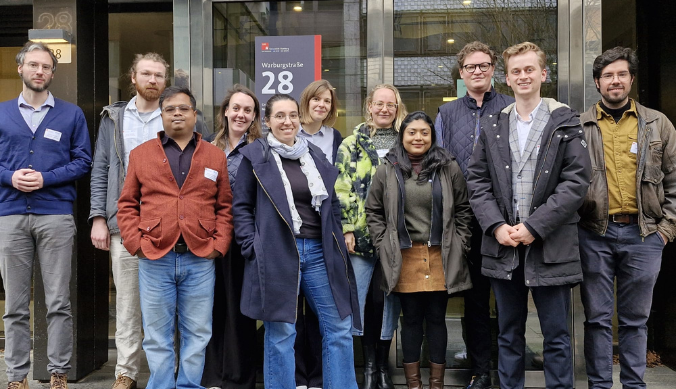To Stick or to Sever? How Multicellular Organisms Resolve the Cellular Conundrum Between Cell-cell Adhesion and Cell Division
Dr Anup Padmanabhan, Assistant Professor of Biology at Ashoka University, explored the challenges faced by the cellular machinery during cell division and cell adhesion. His research revealed how these critical processes can interfere with one another, highlighting their mutual regulation to maintain cellular balance and prevent developmental defects and cancer.
In a multicellular organism, a variety of physiological processes such as tissue growth, embryonic development, wound repair etc. require cells to rapidly divide while being attached to their neighboring cells. These proliferating cells have to maintain tissue integrity by keeping their intercellular contacts intact, so the balance between cell-cell adhesion and cell division is a critical aspect of multicellular organism development and tissue repair.
Cell division, an essential event during proliferation, involves physically separating cells into two daughter cells following nuclear division, a process called cytokinesis. During cytokinesis, motor proteins (myosin) slide on actin filaments, forming what is known as the ‘actomyosin’ structure. While this inward force aids in cell separation, cell-cell adhesion exerts an outward force to keep the cells together. How do cells resolve this conundrum? Cell-cell adhesion is orchestrated by a dedicated set of proteins on the cell surface that bind and attach to similar molecules on adjacent cells, functioning like molecular ‘velcro’. Among these, Cadherins—a class of cell adhesion molecules—play a pivotal role.
They are well-characterised for their structure and function, ensuring strong intercellular connections that are essential for maintaining tissue integrity.
The study, conducted by Debodyuti Mondal, a graduate student, and Dr Anup Padmanabhan, Assistant Professor of Biology, aimed to explore how cells manage the intricate balance between the opposing processes of cell division and adhesion, particularly during the embryonic development of the nematode C. elegans. These embryos, which undergo rapid and stereotypic divisions, provide a model system that is easy to manipulate using microscopic and genetic tools. The research sought to understand how cells orchestrate these distinct cellular functions despite sharing many of the same molecular components. The research uncovered a reciprocal antagonism between cell division and cell adhesion processes. Cadherin-mediated cell adhesion complexes, which specify a cell’s place and context within a tissue, were found to slow down the process of cell division.
Conversely, excessive accumulation of cell adhesion receptors at the division site can lead to cytokinesis failure, resulting in aneuploidy and potentially contributing to cancer development. To maintain cellular homeostasis during embryonic development and tissue repair, the actomyosin cytokinetic (cell division) machinery prevents the excessive accumulation of cadherin at the division site, ensuring a balanced interplay between these two critical cellular functions. Understanding this balance is crucial as uncontrolled cell division can lead to developmental defects in embryos and cancer in differentiated cells, while improper cell adhesion can disrupt tissue integrity and function. The study sheds light on the cellular decision-making processes that enable living cells to navigate and resolve these complex situations, contributing to our understanding of development and disease.
Study at Ashoka













